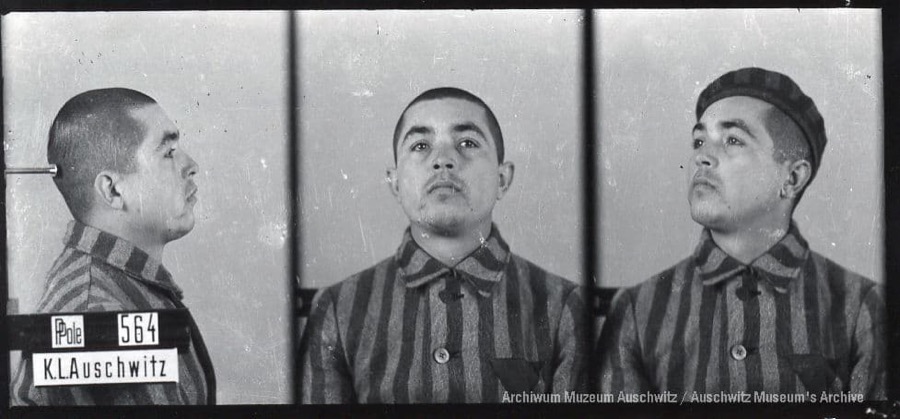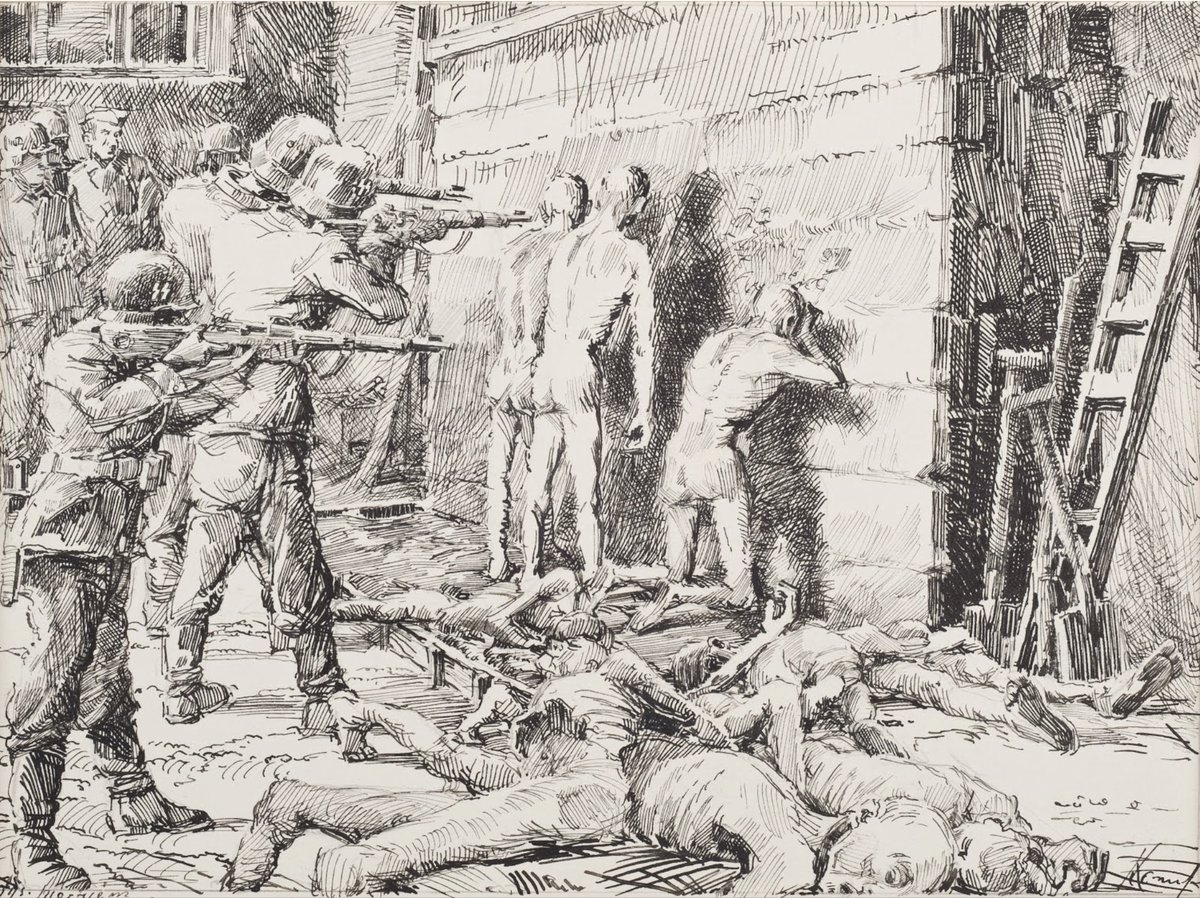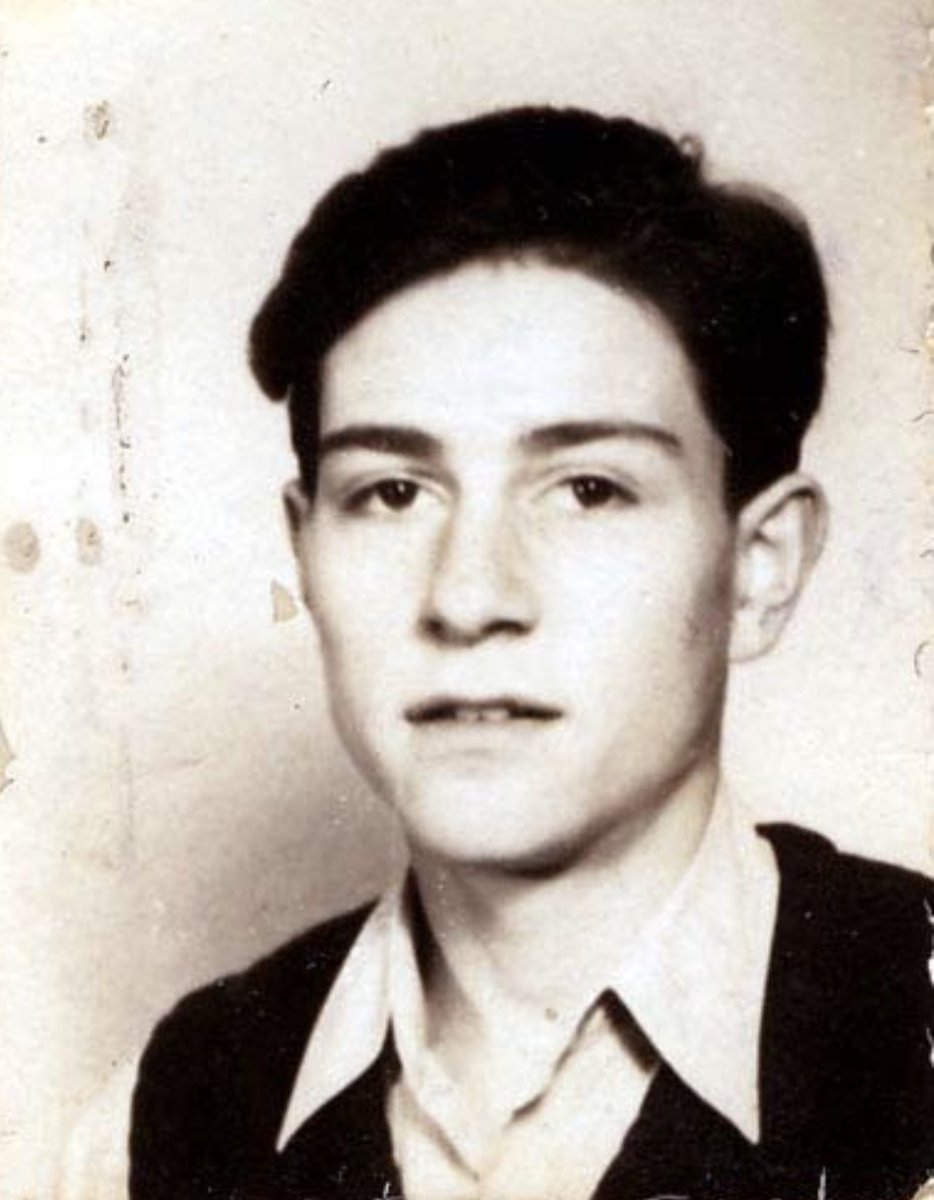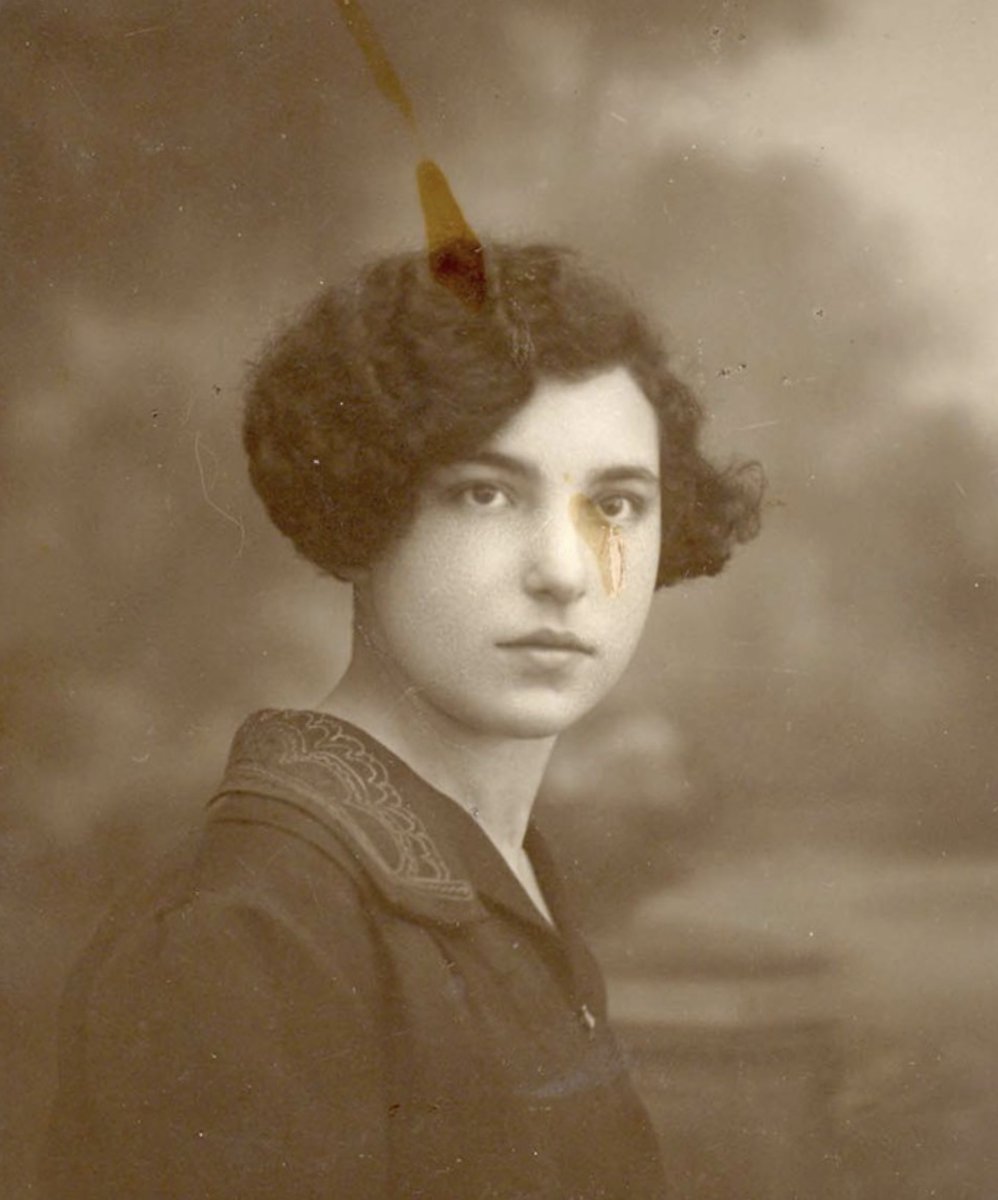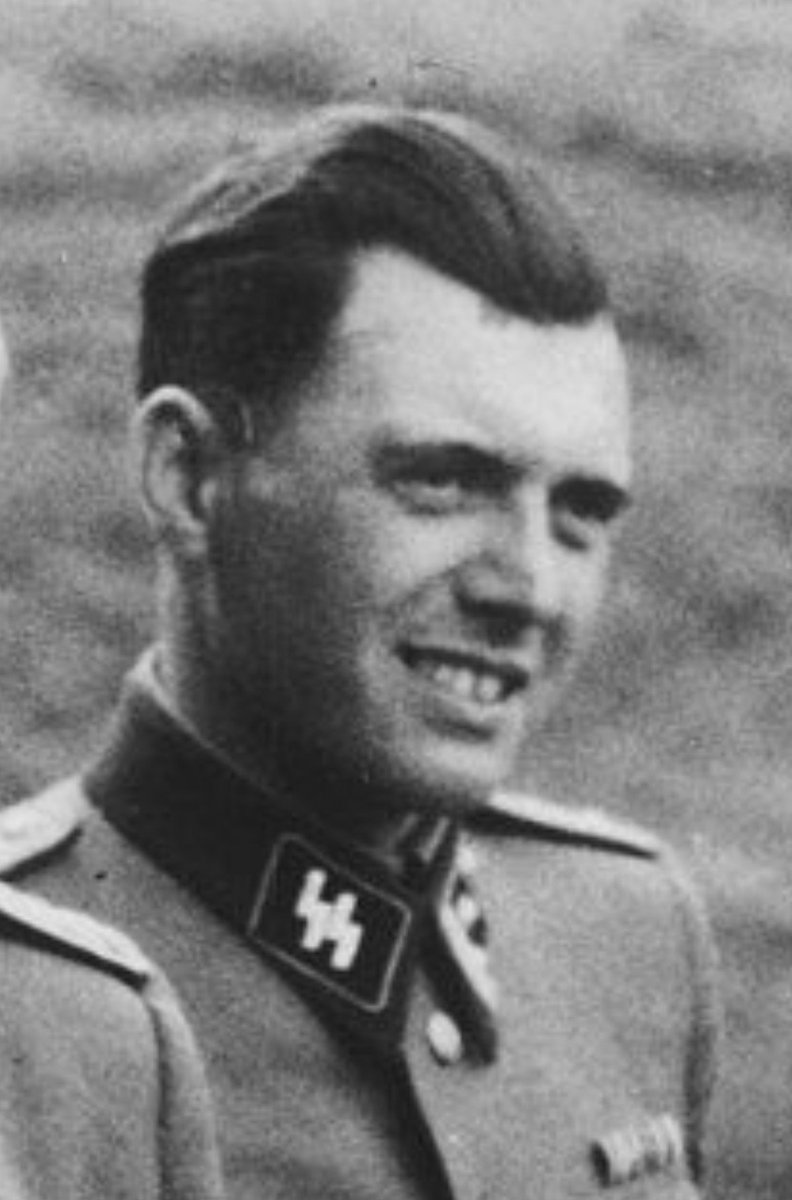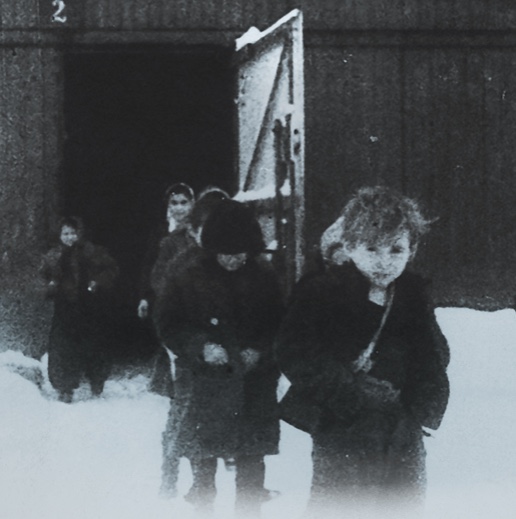
On 5 February 1919 | A Pole, Jerzy Radwanek, was born in Krakow. A pilot.
In #Auschwitz from 19 December 1940.
No. 7782
In 1944 transferred to Gross-Rosen. He survived.
For helping Jewish prisoners in Auschwitz he was recognized as a Righteous Among the Nations.

In #Auschwitz from 19 December 1940.
No. 7782
In 1944 transferred to Gross-Rosen. He survived.
For helping Jewish prisoners in Auschwitz he was recognized as a Righteous Among the Nations.


After work in different groups and a stay in the hospital, Jerzy Radwanek become an electrician in the leather tannery. The inmates working there included members of the resistance—Witold Pilecki, Henryk Bartosiewicz, and Stanisław Kazuba—who enlisted him into the resistance.
When female Jewish prisoners were employed in the warehouses containing the personal belongings of killed Jews on the premises of the tanning factory, he began to help them, providing them in secret with food and medications.
His most constant contact was Helena Hamermesz, who found him after the war and contributed to recognition of Jerzy Radwanek as one of the Righteous among the Nations.
Jerzy Radwanek passed away in 2001.
• • •
Missing some Tweet in this thread? You can try to
force a refresh


